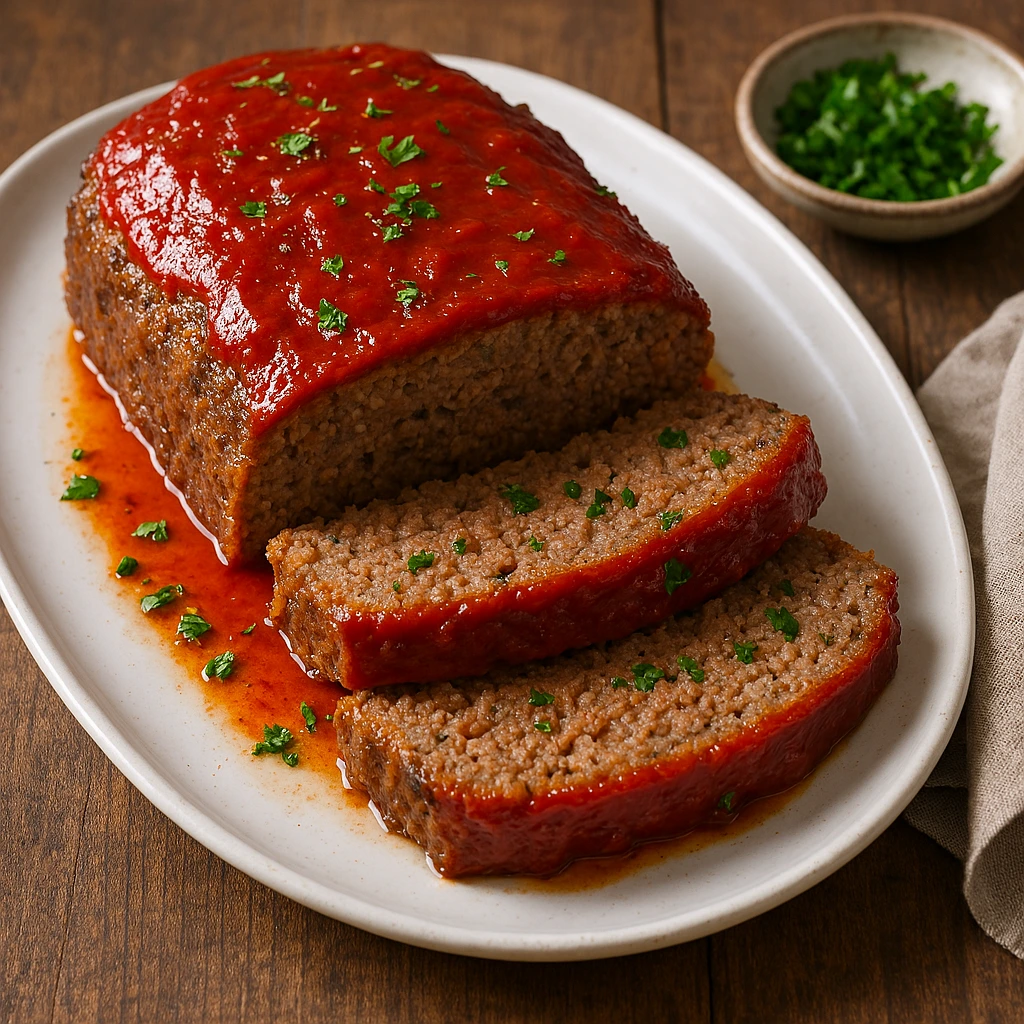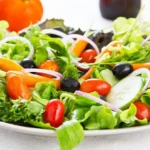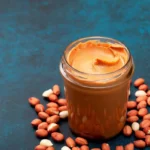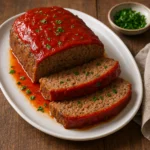
Meatloaf isn’t just a humble dish—it’s a culinary icon with a rich history that spans continents and centuries. From its ancient Roman origins to its role as a budget-friendly staple during the Great Depression, meatloaf has evolved into a beloved comfort food found in kitchens around the world. Whether baked, smoked, or served cold, this adaptable dish has inspired countless variations and even set world records. In this blog, we dive into 25 fascinating, verified facts about meatloaf, exploring its cultural significance, surprising statistics, and the science behind its enduring popularity. If you thought meatloaf was just ground meat in a pan, think again—there’s a whole lot more to discover.
1. Ancient Origins
Meatloaf has ancient roots dating back to the Roman Empire, with recipes appearing in the 4th and 5th centuries AD in the Roman cookbook ‘Apicius’. These early versions of meatloaf were quite sophisticated, often including chopped meat mixed with wine-soaked bread, pine nuts, and a variety of spices. This demonstrates how the concept of combining meat with fillers and seasonings has been a culinary tradition for centuries, evolving through different cultures and eras.
2. First American Mention
The term ‘meatloaf’ first appeared in American culinary literature in the late 19th century. It marked a shift from European-style meat dishes to a uniquely American comfort food. The earliest known printed recipe for meatloaf in the United States was published in the late 1800s, reflecting the growing popularity of ground meat and meat grinders in American kitchens.
3. Great Depression Staple
During the Great Depression in the 1930s, meatloaf became a staple in American households due to its affordability and versatility. Families used inexpensive fillers like breadcrumbs, oats, and vegetables to stretch limited meat supplies. This economical approach allowed people to feed large families with minimal resources, making meatloaf a symbol of resilience and resourcefulness.
4. Wartime Patriotism
In World War II, meatloaf was promoted as a patriotic dish in the United States. Government campaigns encouraged citizens to conserve meat for soldiers by using leftovers and alternative proteins. Recipes featured creative substitutions and emphasized the importance of frugality, reinforcing meatloaf’s role as a practical and supportive meal during wartime.
5. Classic Ingredients
Traditional meatloaf recipes typically include ground meat (commonly beef), breadcrumbs, eggs, and seasonings. The mixture is shaped into a loaf and baked, often topped with ketchup or tomato sauce. These ingredients provide a balance of protein, moisture, and flavor, making meatloaf a hearty and satisfying dish.
6. Global Variations
Meatloaf exists in many cultures under different names. In Germany, it’s known as ‘Hackbraten’; in Belgium, ‘vleesbrood’; and in Bulgaria, ‘Rulo Stefani’, which often includes hard-boiled eggs and pickled vegetables. These international versions highlight the adaptability of meatloaf to local tastes and ingredients.
7. Safe Cooking Temperature
According to USDA guidelines, meatloaf should be cooked to an internal temperature of 160°F (71°C) to ensure food safety. This temperature ensures that harmful bacteria are eliminated, especially in dishes containing ground meat, which is more susceptible to contamination.
8. Versatile Leftovers
Leftover meatloaf is commonly repurposed into sandwiches, often served cold or pan-fried with cheese. This versatility makes meatloaf a practical dish for meal planning, allowing families to enjoy it in different forms over several days.
9. Vegetarian Versions
Vegetarian and vegan meatloaf recipes have gained popularity, using ingredients like lentils, beans, tofu, and plant-based meat substitutes. These versions cater to dietary preferences and restrictions while maintaining the texture and flavor profile of traditional meatloaf.
10. Meatloaf Mix
Many grocery stores offer a ‘meatloaf mix’, which typically combines ground beef, pork, and veal. This blend balances flavor and texture, with beef providing heartiness, pork adding fat and moisture, and veal contributing tenderness.
11. Sweet Glaze Option
A popular variation of meatloaf includes a sweet glaze made from brown sugar and vinegar, often combined with ketchup or mustard. This glaze caramelizes during baking, adding a tangy and sweet contrast to the savory meat.
12. Cooking Methods
Meatloaf can be prepared using various cooking methods, including baking, smoking, and grilling. Each method imparts a unique flavor and texture, with smoking adding depth and grilling creating a crispy exterior.
13. Comfort Food Trio
In the United States, meatloaf is often served with mashed potatoes and green beans, forming a classic comfort food trio. This combination is popular in diners and home kitchens, symbolizing warmth and tradition.
14. Bacon Explosion
The ‘Bacon Explosion’ is a decadent meatloaf variation that includes cheese-filled meat wrapped in a lattice of bacon. This indulgent dish gained popularity in barbecue circles and showcases the creative potential of meatloaf.
15. Meatloaf Madness
‘Meatloaf Madness’ is a culinary competition held in various U.S. cities where chefs create innovative meatloaf recipes. These events celebrate the dish’s versatility and encourage experimentation with ingredients and presentation.
16. Vegetable Additions
Many meatloaf recipes incorporate vegetables like carrots, onions, and bell peppers. These additions enhance flavor, texture, and nutritional value, making the dish more balanced and colorful.
17. Largest Meatloaf Record
The largest meatloaf ever made weighed 2,500 pounds and was created in Mexico in 2008. This massive culinary feat set a world record and demonstrated the dish’s popularity and potential for large-scale preparation.
18. National Meatloaf Day
National Meatloaf Appreciation Day is celebrated in the United States on October 18. This unofficial holiday honors the cultural and culinary significance of meatloaf, encouraging people to share recipes and enjoy the dish.
19. Cold Meatloaf Traditions
In several European countries, meatloaf is traditionally served cold, often accompanied by sauces like Cumberland or brown gravy. This practice is common in Belgium and Austria, where meatloaf is part of charcuterie-style meals.
20. Food Science Role
The popularity of meatloaf grew in the 1930s with advancements in food technology, including the widespread use of canned goods and meat grinders. These innovations made meatloaf easier to prepare and more accessible to households.
21. Roman Brain Loaf
Early Roman versions of meatloaf sometimes included animal brains and offal, reflecting the resourcefulness of ancient cooks. These ingredients were used to maximize nutrition and minimize waste in meat preparation.
22. Preservation Techniques
In 17th-century France, meatloaf was preserved using gelatin layers, allowing it to be stored longer without refrigeration. This technique was part of early charcuterie practices and contributed to the dish’s longevity.
23. Pennsylvania Dutch Scrapple
The Pennsylvania Dutch created ‘scrapple’, a precursor to American meatloaf, using pork scraps and cornmeal pressed into loaves. This dish reflects the frugal and inventive cooking traditions of early American settlers.
24. Cookbook Influence
Meatloaf recipes were commonly included with meat grinders sold in the late 1800s. These promotional materials helped popularize the dish by providing easy-to-follow instructions and showcasing its versatility.
25. Pop Culture Presence
Meatloaf has appeared in music, literature, and television as a symbol of home-cooked warmth and nostalgia. Its presence in pop culture reinforces its status as a beloved and enduring comfort food.
Frequently Asked Questions about Meatloaf:
1. What is meatloaf?
Meatloaf is a savory dish made from ground meat—most commonly beef—combined with ingredients like breadcrumbs, eggs, onions, and seasonings. It’s shaped into a loaf and baked, often topped with a glaze such as ketchup or barbecue sauce. It’s widely considered a comfort food, especially in American cuisine.
2. What meats can be used in meatloaf?
Meatloaf can be made with a variety of meats including beef, pork, veal, turkey, chicken, or lamb. A popular combination is equal parts ground beef, pork, and veal, which provides a balance of flavor, fat, and tenderness. Vegetarian versions use lentils, beans, mushrooms, or plant-based meat substitutes.
3. What is the ideal internal temperature for cooked meatloaf?
The recommended internal temperature for meatloaf is 160°F (71°C). This ensures the meat is fully cooked and safe to eat. Using a meat thermometer is the most accurate way to check doneness, especially in the thickest part of the loaf.
4. How long does it take to bake meatloaf?
At 350°F (175°C), a standard meatloaf typically takes 55 minutes to 1 hour to bake. The exact time depends on the size and thickness of the loaf. Always verify with a thermometer to ensure it reaches the safe internal temperature.
5. What are the best binders for meatloaf?
Common binders include breadcrumbs, eggs, crushed crackers, and rolled oats. These help hold the loaf together and absorb moisture. For gluten-free versions, alternatives like almond flour or gluten-free oats can be used.
6. How do you keep meatloaf moist?
To keep meatloaf moist, use meats with higher fat content (like 80/20 ground beef), add moisture-rich ingredients such as milk, grated vegetables, or broth, and avoid overmixing the meat. A glaze or sauce also helps retain moisture during baking.
7. Can meatloaf be made ahead of time?
Yes, meatloaf can be prepared ahead. You can assemble the loaf and refrigerate it for up to 24 hours before baking. Cooked meatloaf can be stored in the refrigerator for 3–4 days or frozen for up to 3 months.
8. What are popular glazes or sauces for meatloaf?
The classic glaze is a mix of ketchup, brown sugar, and vinegar. Other popular options include barbecue sauce, mustard-based glazes, or even cheese toppings. These add flavor and help keep the loaf moist.
9. What are common mistakes to avoid when making meatloaf?
- Overmixing the meat mixture, which can make the loaf tough.
- Using only lean meat, which may result in dryness.
- Skipping binders, causing the loaf to fall apart.
- Not checking internal temperature, risking undercooked meat.
- Overbaking, which dries out the loaf.
10. Can meatloaf be made without breadcrumbs?
Yes. Breadcrumbs can be substituted with rolled oats, crushed crackers, mashed vegetables, or nut flours like almond flour. These alternatives still help bind the meat and retain moisture.
11. What are some creative variations of meatloaf?
Creative versions include:
- Stuffed meatloaf with cheese, spinach, or hard-boiled eggs.
- Bacon-wrapped meatloaf for added flavor and crispiness.
- Mini meatloaves baked in muffin tins.
- Vegetarian meatloaf using lentils, mushrooms, or chickpeas.
12. What sides go well with meatloaf?
Popular sides include mashed potatoes, green beans, roasted vegetables, macaroni and cheese, cornbread, and gravy. These hearty accompaniments complement the rich flavor of meatloaf and round out the meal.









